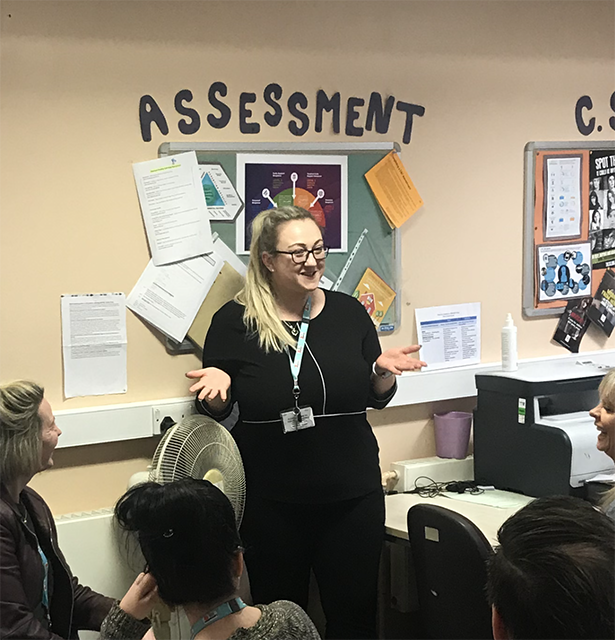As an advanced practitioner and qualified social worker at Lancashire County Council, Rachel Culverwell is responsible for supporting frontline teams to develop quality long-term practice through ongoing continuing professional development (CPD).
Here she shares her advice for taking the National Assessment and Accreditation System (NAAS) and why she believes it’s a means of championing the profession.

Since qualifying as a social worker in 2014, I have always maintained a strong commitment to CPD. I think we as social workers forget how much we do throughout the year, and often we can put CPD to the bottom of the priority list.
I actively make time in my diary to record all development within my CPD log on a monthly basis, including additional resources or research I’ve read, as well as training material I deliver to staff.
Inspiring through experience
NAAS was launched to enable child and family social workers to continue to develop the skills and knowledge to improve outcomes for children and families. It aims to provide social workers with a better understanding of their current level of knowledge and skill, highlighting strengths and areas for development, and supporting employers to continue to raise the national standard and consistency of practice.
In my current role, I encourage managers and social workers to have autonomy in their CPD and to see the opportunity NAAS brings. I think we put added pressures on ourselves when we feel we are being assessed in any form. But NAAS is a means of showcasing our strengths, the purpose of social workers and why we are needed.
I was eager to take NAAS at both the practitioner and practice supervisor levels. I wanted to be able to relate to both frontline social workers and team managers, to give relevant advice and provide the support that would help them in their own NAAS journey.
Whilst I was apprehensive in taking the supervisor assessment, having not worked or working as a manager of staff. I quickly realised the processes and values that go with being a manager aren’t things you can necessarily teach. They come from within as personal and professional values.
Both assessments have enabled me to refresh my understanding of basic social work skills and practice as well as the practice wisdom required for the applied knowledge questions.
I found the experience exciting and can honestly say I enjoyed the process. From preparation through to the assessment day.
I’m genuinely proud of my achievement of passing the assessment and becoming an accredited child and family practitioner.
Top tips for embedding CPD
On my journey to becoming NAAS accredited, I’ve picked up a few tips that can help social workers and managers prepare for NAAS as well as maintain their CPD. Some of which are explained below.
1. See NAAS as an opportunity
Don’t see NAAS as a competency assessment. See it as an opportunity. The assessment is nothing different from what you as a social worker experience and do day in day out. Keep telling yourself this and you’ll take away a lot of extra pressure.
2. Reflect, reflect, reflect!
In whatever way, shape or form you reflect, it is what enables us to learn, develop and grow as practitioners. If you allow yourself the time and space to think about your decisions, then this will help you in your role as a reflective practitioner. We are constantly evolving and developing, and this does not stop when you finish your NAAS journey.
3. Don’t worry about the role-play (simulated assessment)!
You quickly forget you are being filmed. It’s managed very discreetly. And really, it’s the same principle as if your manager or supervisor is accompanying you on a visit. Once you’re in that scenario your senses kick-in and you’re in social worker mode, thinking about how best to handle the situation.
4. Record your CPD
It’s important to record and demonstrate how we are maintaining standards. I recommend logging all your CPD on your Social Work England (SWE) profile, including your NAAS accreditation, on a regular basis and as part of a monthly routine.
5. Be kind
Not just to the people we support and work with but to yourself. Social work is hard. We are all humans as well as social workers. We are mothers, fathers, carers, siblings, sons, daughters before we became social workers and our values and life experiences are what anchor us.
Always remember why you wanted to work in the area you do. If you feel yourself forgetting, questioning or become a bit jaded or worried you are unable to cope then think about why this may be. Take time to ask for help and support if you need it. No one is going to think badly of you for this. In fact, it will be the opposite for being reflective enough to acknowledge it!
For more advice on preparing to take the NAAS assessment, visit: Top tips for approaching social work accreditation.